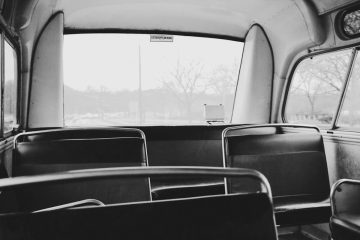What Happened On November 18th?
On November 18, 1978, the secluded settlement of Jonestown, deep in the Guyanese jungle, became the site of one of history’s most tragic mass suicides. More than 900 followers of the Peoples Temple died under the direction of their leader, Jim Jones. Jones commanded his followers to drink cyanide-laced punch while armed guards surrounded the area to prevent anyone from escaping. Parents, following Jones’s orders, administered the poison to their children first, trusting his claim that death would shield them from persecution. Within hours, Jonestown had transformed from an isolated sanctuary into a mass grave, with bodies of men, women, and children lying in rows across the ground.
The events leading up to this catastrophe began one day earlier, on November 17th, when U.S. Congressman Leo Ryan arrived to investigate reports of abuse within Jonestown. At first, residents welcomed him warmly, and Jones tried to portray the community as peaceful and self-sustaining. But the situation soon changed. Several residents managed to slip notes to Ryan’s team, pleading for help to escape. Ryan agreed to take those who wished to leave, but as the group reached the Port Kaituma airstrip, Temple gunmen ambushed them, killing Ryan and four others. Survivors fled back to the United States, carrying news of the brutal attack.
Jones reacted immediately. He gathered his followers in the settlement’s central pavilion and warned them that outsiders would soon arrive to destroy everything they had built. For hours, his voice filled the pavilion over the loudspeakers, insisting that only death could spare them from the suffering he claimed was inevitable. Audio recordings captured his shifting tone, blending reassurances with veiled threats. Many, especially the elderly and children, drank the poison quietly, while others who resisted were forced to comply.
Months before, Jones had conditioned his followers to accept this outcome. He conducted repeated “white nights,” drills in which he ordered them to practice mass suicide as a show of loyalty. In these rehearsals, he distributed drinks he claimed were poisoned, only to reveal later that they were harmless. Each drill eroded the boundary between pretense and reality, conditioning his followers to accept his authority over every aspect of their lives, even to the point of death.
Jim Jones, born in 1931 in Crete, Indiana, grew up amid poverty and hardship. He turned to religion at a young age and began preaching as a teenager, blending themes of social justice with claims of miraculous healing. His intense, persuasive style attracted individuals searching for purpose and connection. In the 1950s, he established the Peoples Temple in Indiana, drawing people who found solace in his ideals of unity and compassion. From the beginning, Jones demanded unwavering loyalty, pressuring followers to reveal personal secrets that he later used to maintain his influence over them.
Jones’s stance on racial integration distinguished him during an era of rigid segregation. He fostered a racially integrated congregation and adopted children from various backgrounds, calling them his “rainbow family.” In 1965, he moved the Peoples Temple to California, where his influence grew rapidly. In San Francisco, he formed relationships with political leaders, donated to local causes, and promoted himself as a reformer. Behind closed doors, however, he exercised strict control over his followers, enforcing loyalty through public humiliation, orchestrated “catharsis sessions,” and cutting off members from family outside the Temple. He instilled in his followers a deep distrust of the outside world.
As his influence expanded, Jones became increasingly paranoid. Convinced that external forces aimed to destroy him, he relocated his followers to Guyana in 1977, where he established Jonestown. He promised a utopia free from persecution, where they could live peacefully and support one another. When they arrived, however, the community faced a grim reality. Jones assigned them to grueling fieldwork under strict limitations on food and resources, while his voice droned over loudspeakers at all hours, dictating their routines and thoughts. Exhausted and isolated, members became wholly dependent on Jones for survival.
Within Jonestown, Jones enforced rules that erased individuality and strengthened his control. He banned followers from using “I” in speech, requiring them to say “we” to promote a collective identity. He frequently reassigned tasks without notice, creating a sense of instability that weakened any sense of self. While his followers endured these hardships, Jones enjoyed a life of relative luxury. He had access to imported foods, private medical treatment, and alcohol—comforts denied to the rest of the community. To prevent escape, he confiscated passports and identification documents, effectively trapping his followers in Jonestown.
By this time, Jones’s physical and mental health had deteriorated sharply. He relied on a mixture of amphetamines and sedatives, which fueled his paranoia and erratic behavior. His drug use became so extreme that followers often observed him disoriented or incoherent during sermons. To maintain control, he established a network of informants who reported any signs of doubt or dissent. He conducted loyalty tests, sometimes requiring followers to drink mock poison to prove their commitment. These tactics kept his followers in a state of constant fear, discouraging any challenge to his authority.
The aftermath of November 18th revealed the depth of Jones’s manipulation and the despair that pervaded Jonestown. Investigators found letters that expressed hopelessness, regret, and pleas for rescue that went unanswered. These messages, along with recorded audio of Jones’s final speech, revealed the psychological grip he held over his followers until their last moments.





